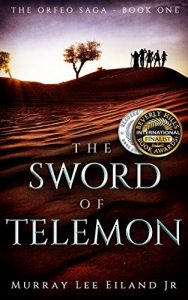The Homeric "long-haired Achaeans" were part of the Mycenaean culture of Greece (1600 BC - 1100 BC). They were a Bronze Age people who were quite removed in time and culture from the Classical period (5th - 4th centuries BC). In this novel a young Achaean prince is captured in a raid. His younger brother Orfeo, and a group of warriors, are sent on a mission to look for him. Telemon, a legendary warrior, and Zurga, an elderly member of a group called the Wanderers, are soon joined by Clarice, a girl who is a master of disguise. To their dismay they find that the kidnapped prince has been made a galley slave and that the maritime power of Thera plans to conquer the entire Mediterranean. Can they avert disaster?
The story starts just before the eruption of Thera in about 1600 BC. This cataclysm destroyed the lavish Minoan culture of Crete. It also allowed the Mycenaeans to expand throughout the eastern Mediterranean. The Mycenaean culture - while originally warlike and rather rustic - developed vibrant cites, such as Pylos. This era was the setting for Homer's epic poems about the Trojan War (perhaps 12th or 11th century BC).
The story starts just before the eruption of Thera in about 1600 BC. This cataclysm destroyed the lavish Minoan culture of Crete. It also allowed the Mycenaeans to expand throughout the eastern Mediterranean. The Mycenaean culture - while originally warlike and rather rustic - developed vibrant cites, such as Pylos. This era was the setting for Homer's epic poems about the Trojan War (perhaps 12th or 11th century BC).






